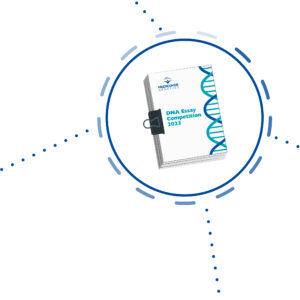Scientific background
Prader-Willi syndrome (PWS) is characterized by severe muscle hypotonia with feeding difficulties and failure to thrive in infancy. Decreased fetal movements may be evident during pregnancy, and delivery may occur from a breech presentation. Motor development is moderately delayed meaning children can sit at one year of age on average and walk freely at two years of age. There is mild intellectual disability with approximately 40% of children having intelligence at the lower end of the normal range. Nevertheless, learning difficulties are common. Beyond infancy, hyperphagia occurs leading to obesity and subsequent complications such as diabetes mellitus and cardiopulmonary disease. Children have short stature in most cases. There is hypogenitalism or hypogonadism with low hormone levels, and the onset of puberty is often not age-appropriate. Typical behaviors include stubbornness and temper tantrums, as well as skin picking with a tendency to self-injury. Patients have good visual comprehension and processing skills, e.g., putting puzzles together. External features often include a narrow face, almond-shaped eyes, strabismus, a small mouth with a narrow upper lip, and small hands and feet.
Most patients with a microdeletion as the cause of PWS have some degree of hypopigmentation. The incidence is reported to be 1:15,000 to 1:30,000. The disease-causing genes in PWS (and Angelman syndrome) are located in a chromosomal region (15q11.2-q13) that is susceptible to so-called genomic imprinting. This parental imprinting causes genes to vary in the level of DNA methylation, chromatin structure, and thus expression, depending on which parent they originate from. This is controlled by a two-part imprinting center in 15q11.2-q13. Because of this unique feature, Prader-Willi syndrome and Angelman syndrome may have other causes besides a microdeletion, which lead to loss of expression of the affected genes. Several genes in the region 15q11.2-q13 are expressed only from paternal chromosome 15 and are causally related to PWS. Approximately 70% of PWS patients have a microdeletion 15q11.2-q13 on chromosome 15 inherited from the father. About 30% have a maternal uniparental disomy 15 (UPD), i.e., both of the chromosome 15 originate from the mother and none from the father. About 1% have a disorder in the imprinting center, and in a few cases a chromosomal structural aberration involving the region 15q11.2-q13 was found. There are certain genotype-phenotype correlations. Molecular cytogenetic (FISH) analysis detects only microdeletion, while methylation sensitive PCR detects microdeletion, UPD and imprinting mutation without specification.
References
Butler et al. 2018, Am J Med Genet A 176(2):368 / Cassidy et al. 2009, Eur J Hum Genet 17:3 / Leitlinien der Deutschen Gesellschaft für Humangenetik und dem Berufsverband der Deutschen Humangenetiker e.V. 2010, medgen 22:282 / Sarimski 2003: Prader-Willi-Syndrom, in: Entwicklungspsychologie genetischer Syndrome, 3.Aufl. Hogrefe, Göttingen / Rost 2000, Monatsschr Kinderheilkd 148:55 / Zeschnigk et al. 1997, Eur J Hum Genet 5:94 / Holm et al. 1993, Pediatrics 91:398





















